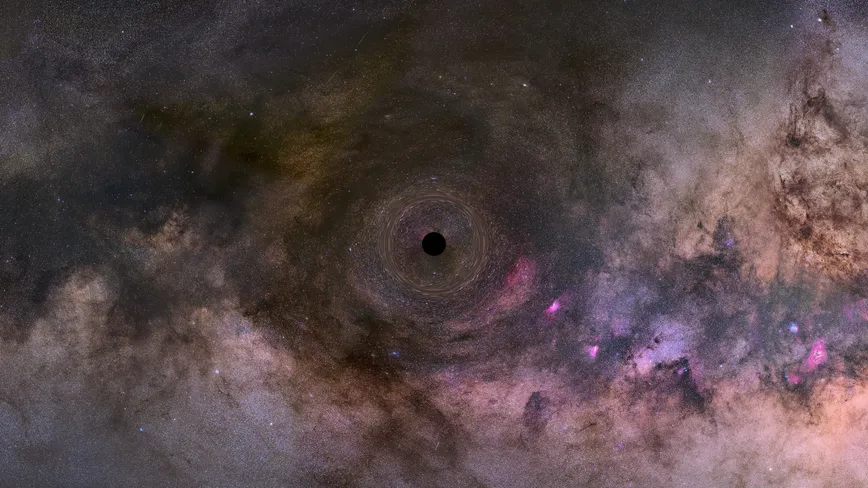According to CNET report, astronomers may have completed the seemingly impossible task and discovered a "floating" black hole for the first time** By definition, black holes themselves are invisible because even light cannot escape their strong gravitational pull. In the past few years, the international cooperation behind the event horizon telescope has successfully photographed black holes for the first time. But when we look at these images, the light we see is actually a disk of hot gas and matter circling around the edge of the black hole itself.

Sometimes black holes are obvious because one or more stars orbit them, just like the supermassive black hole in the center of the Milky Way galaxy. But scientists predict that hundreds of millions of black holes are "floating" in more isolated corners of the universe.
Now, the team of astronomers has recorded that it may be a neutron star or a "wandering" black hole hidden in a black hole whose gravity is inevitable. This is the first time to observe how the same force distorts light from farther stars, a phenomenon known as gravitational microlenses.
Jessica Lu, Professor of astronomy at the University of California, Berkeley, said in a statement: "this is the first free floating black hole or neutron star discovered by using gravitational microlenses. Through microlenses, we can detect these lonely and compact celestial bodies. I think we have opened a new window for these dark celestial bodies, which can not be seen in any other way."
Jessica Lu helped lead one of two teams that analyzed the same data on microlens events observed by NASA's Hubble Space Telescope. Their analysis has been accepted as the forthcoming Astrophysical Journal Letters.
Another team at the Baltimore Space Telescope Science Institute calculated that the object's mass was slightly different and concluded with greater confidence that it was actually a black hole. The paper will be published in the Astrophysical Journal.
"Although we want to say that it is definitely a black hole, we must report all permitted solutions. This includes lower mass black holes and possibly even neutron stars," Jessica Lu said.
According to competitive estimates, it is between 1.6 and 7.1 solar masses. The lower mass takes into account the possibility that the object may be a neutron star. If it is at the high end of the range, it becomes more indisputable that the object is a black hole.
No matter what it is, the celestial body is labeled moa-2011-blg-191 and ogle-2011-blg-0462 (ob110462 for short), 5000 light-years away from the earth, so there is no need to worry that it will sneak close to us soon.
The debate over what type of cosmic feature is bending the light of the stars behind it may soon be resolved. The Hubble Space Telescope will conduct more observations and collect more data on this object in the second half of 2022.